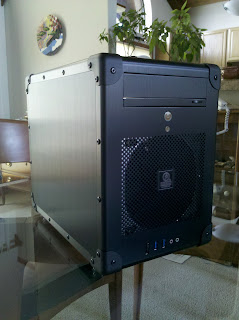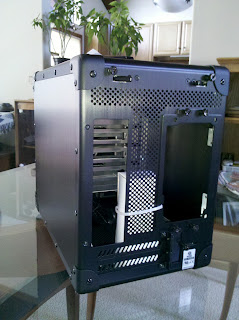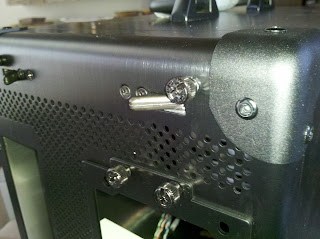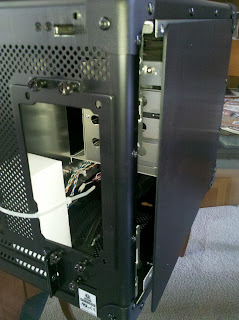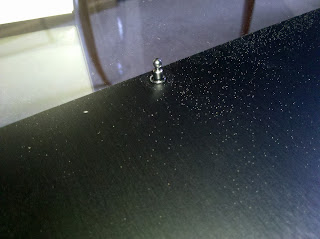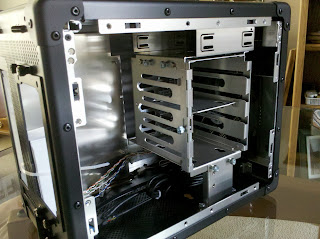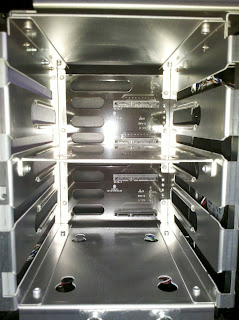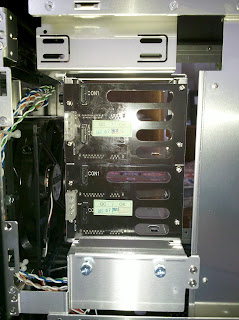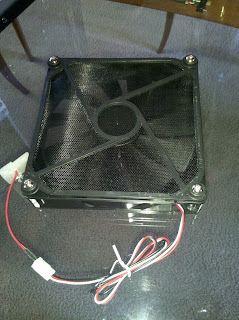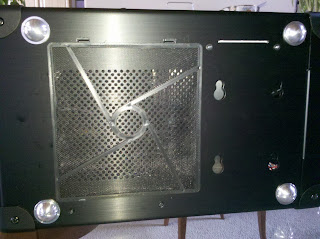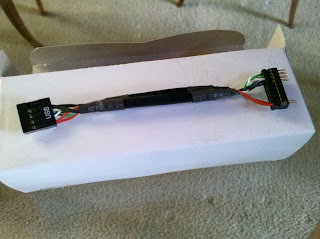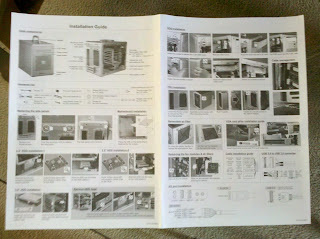If you live in the SF Bay Area and haven’t heard of
Urban Ore, you need to check it out. Something like a thrift store on steroids, the warehouse-sized bazaar vends wares ranging from cabinet doors, construction supplies and tools to early 90s electronics, retro furniture, and large-scale art from theater sets. All for thrift store prices. I think I’ll start sojourning there weekly, and hopefully find more gems like this:
JVC miniBox – $2.00
Inside I found a 65W PSU (4A on the +12V rail), a 1.06 GB Seagate SCSI Hard Drive (model #ST31055N), a SCSI CD-ROM drive, and about a pound of dust.
I stripped and cleaned the box with a quickness. Happily, a miniITX motherboard fits quite nicely in the upper compartment (though there are no motherboard mounts):
Fitting a power supply in that small case will be much more of a challenge. A PicoPSU might be the only option. A stock CPU heatsink also probably won’t fit, so I may need to use a board with a low profile passive heatsink, such as a Supermicro Atom board. The 80mm fan mount in the rear is likely enough to keep the whole box cool, but I may cut out more to accommodate a 120mm fan to improve cooling and reduce noise. The dual 5.25″ bays will easily accommodate a 3-in-2 cage or two single hot swap cages (there are no tabs separating the bays). Finally, a paint job is in order as no-one likes that ugly beige…why was that horrid color the standard for so many years?
So, what should I do with this one? The obvious options in my mind are a 3 drive miniServer, an HTPC, or a SFF desktop computer. What do you think?
